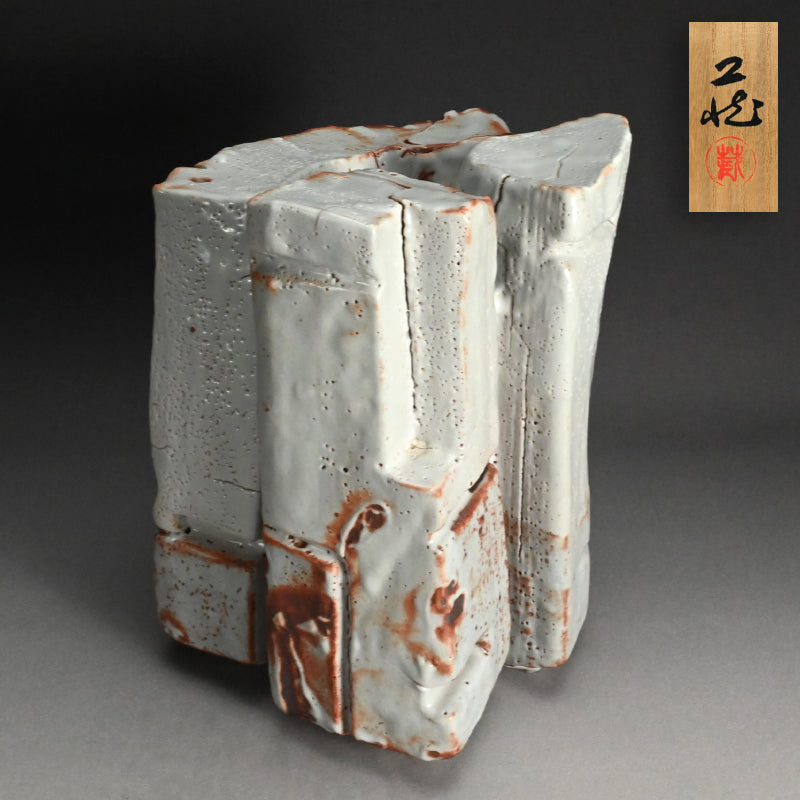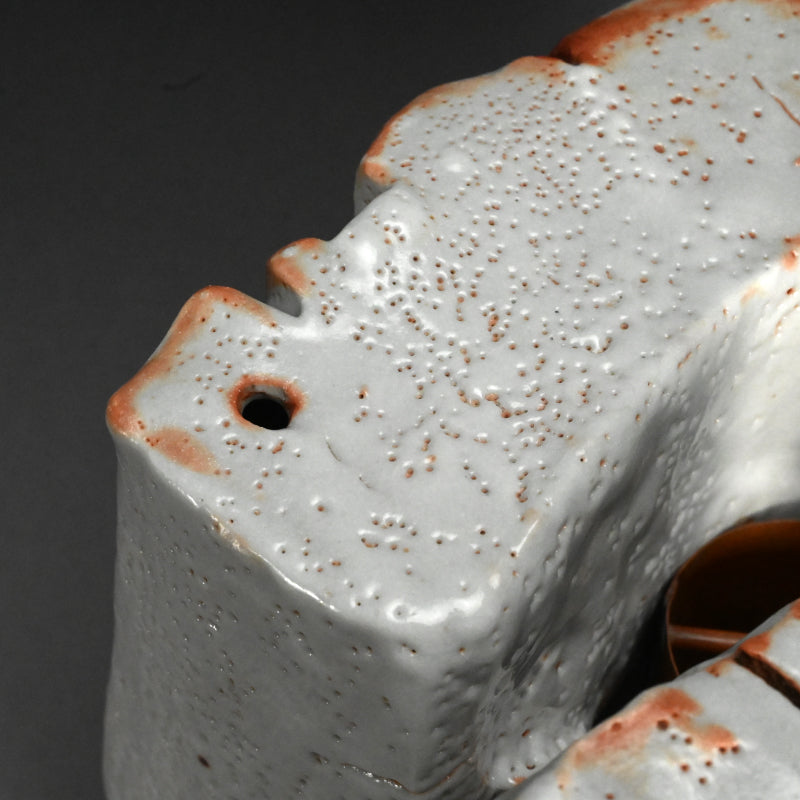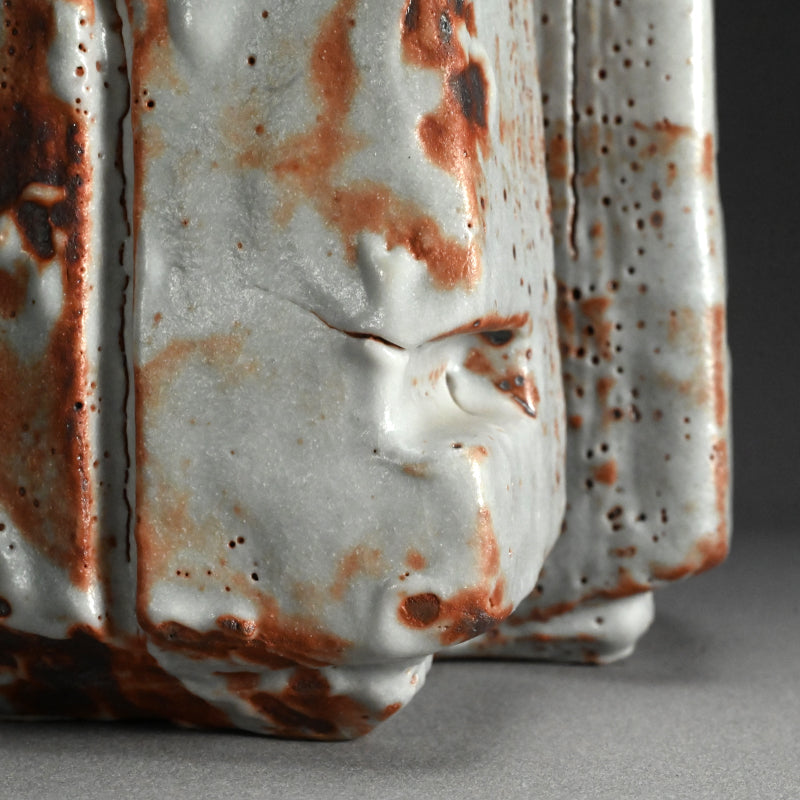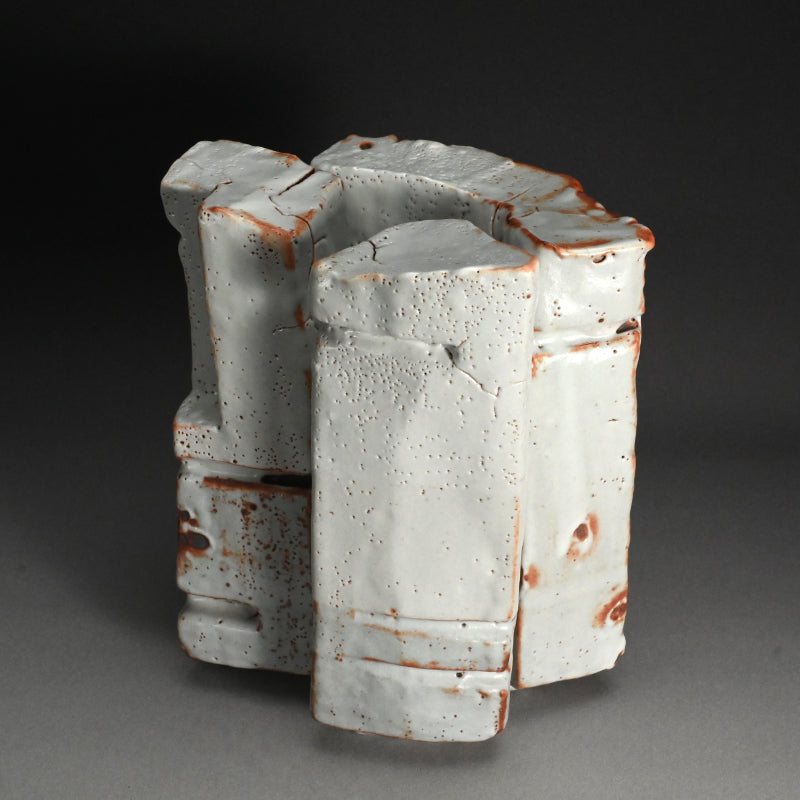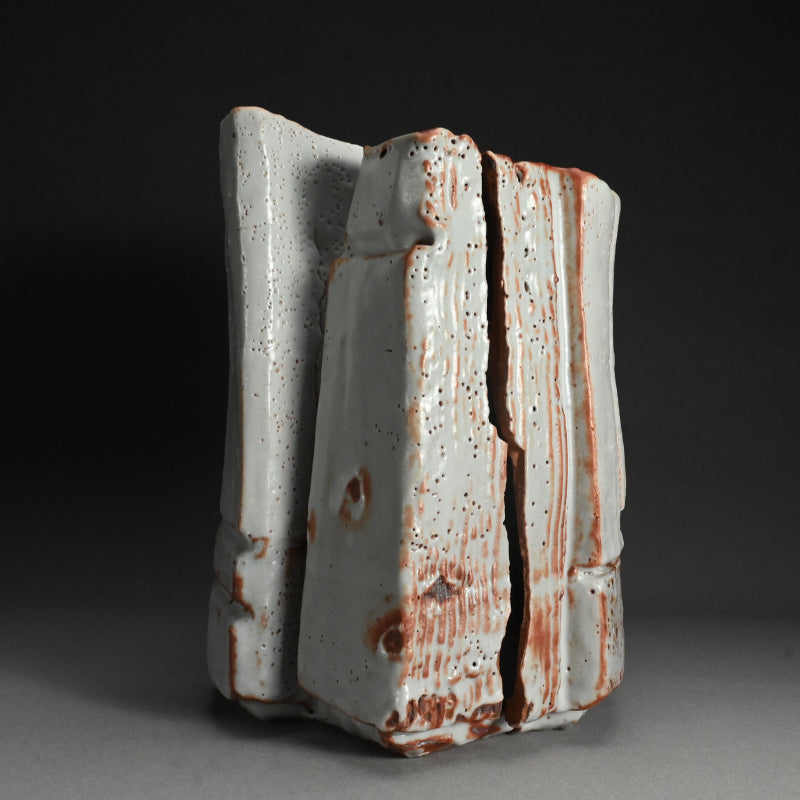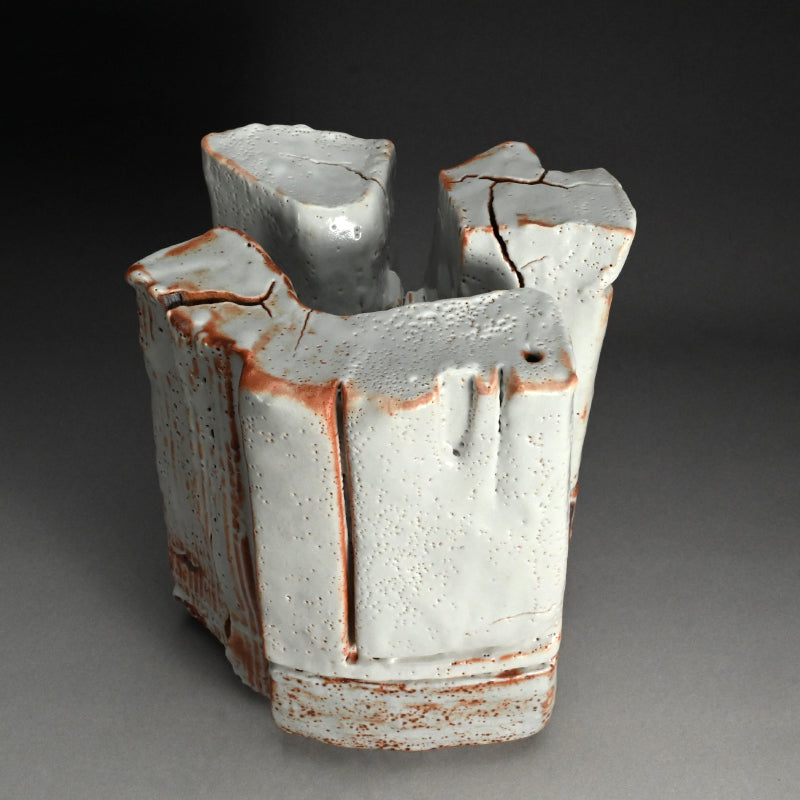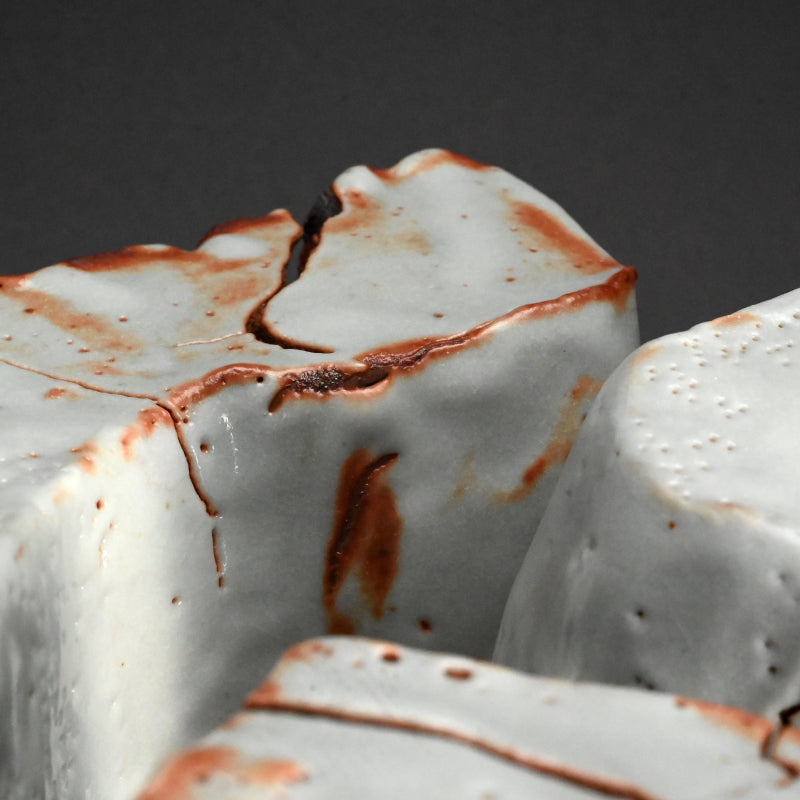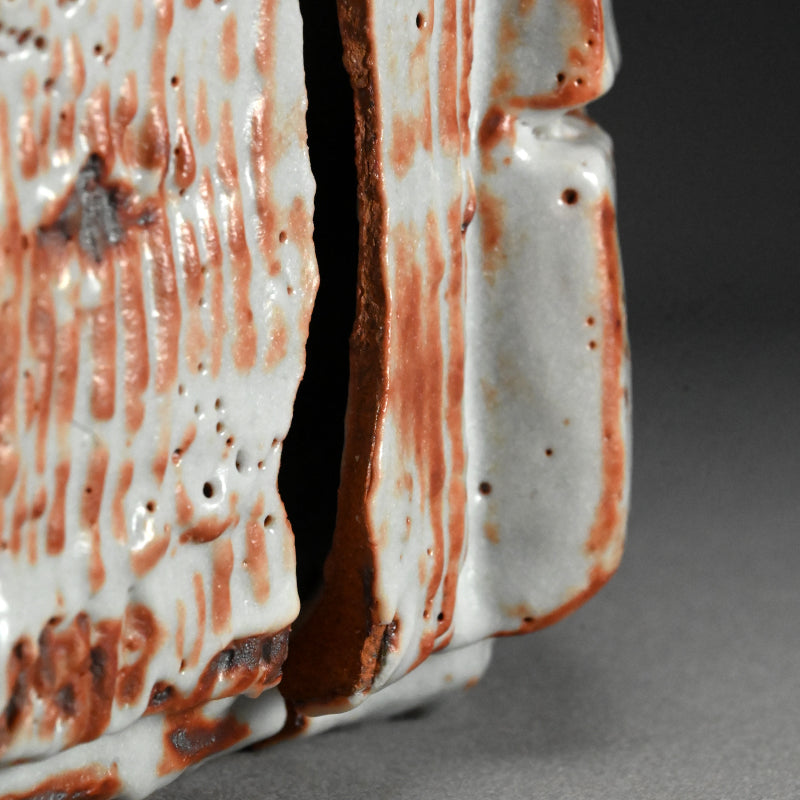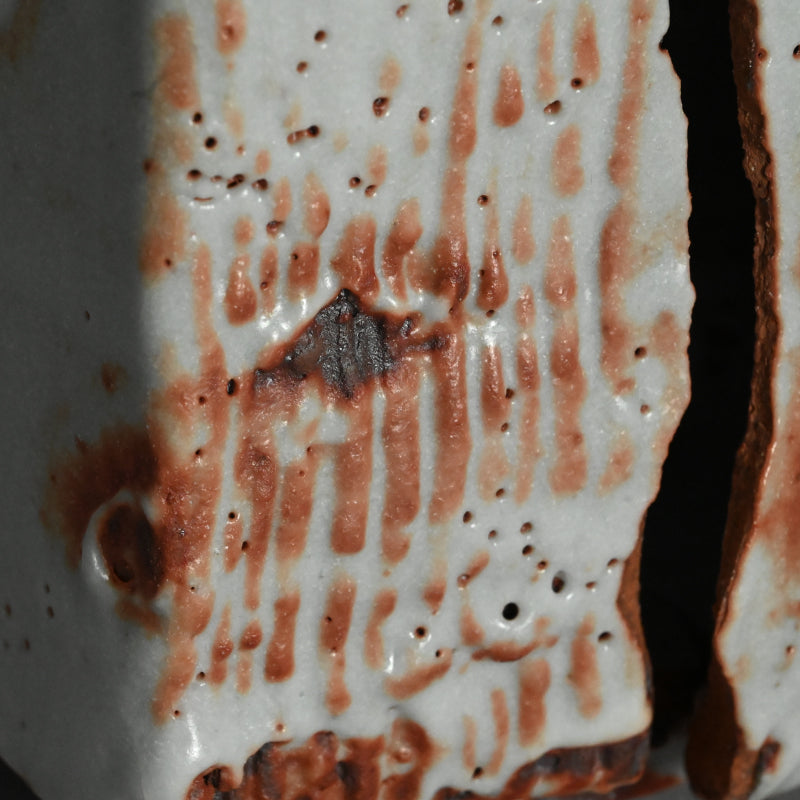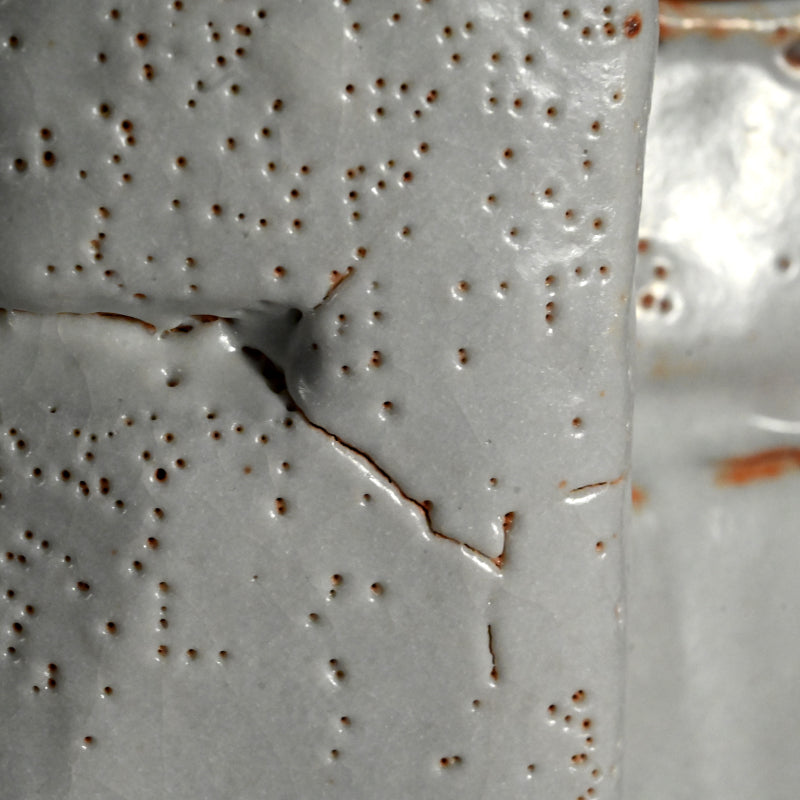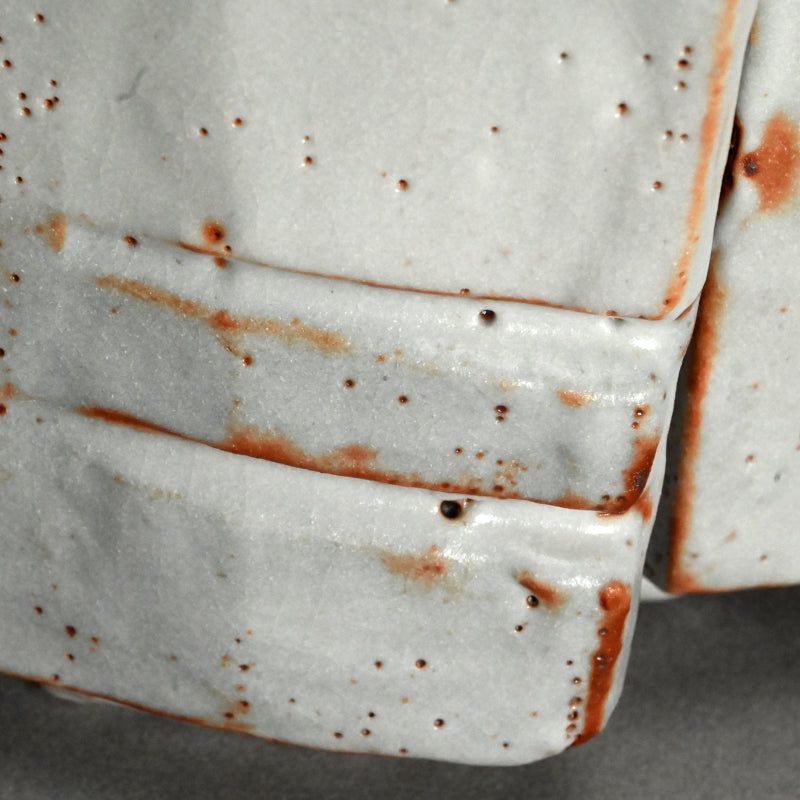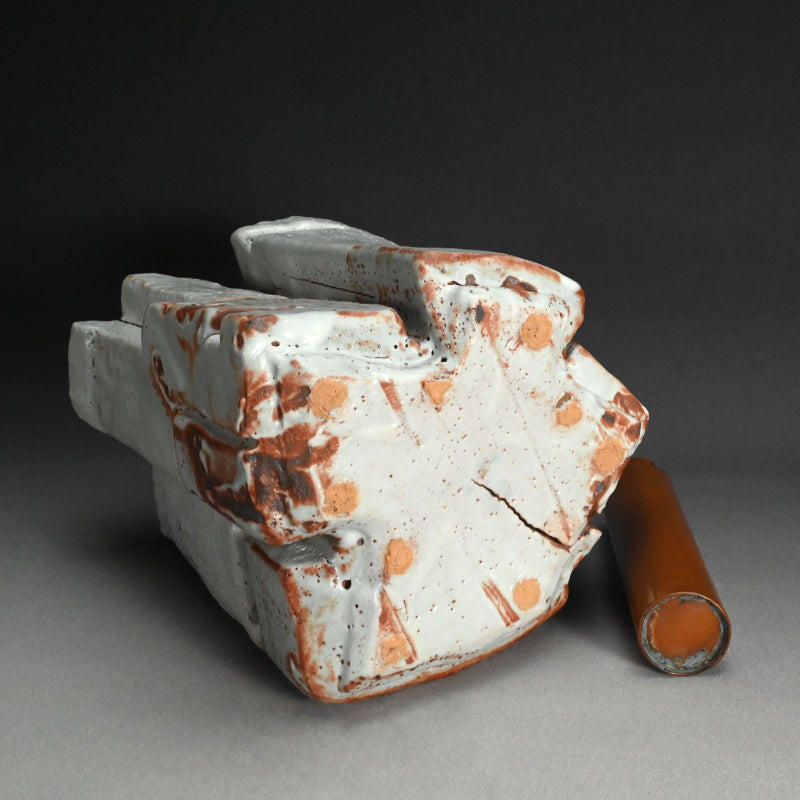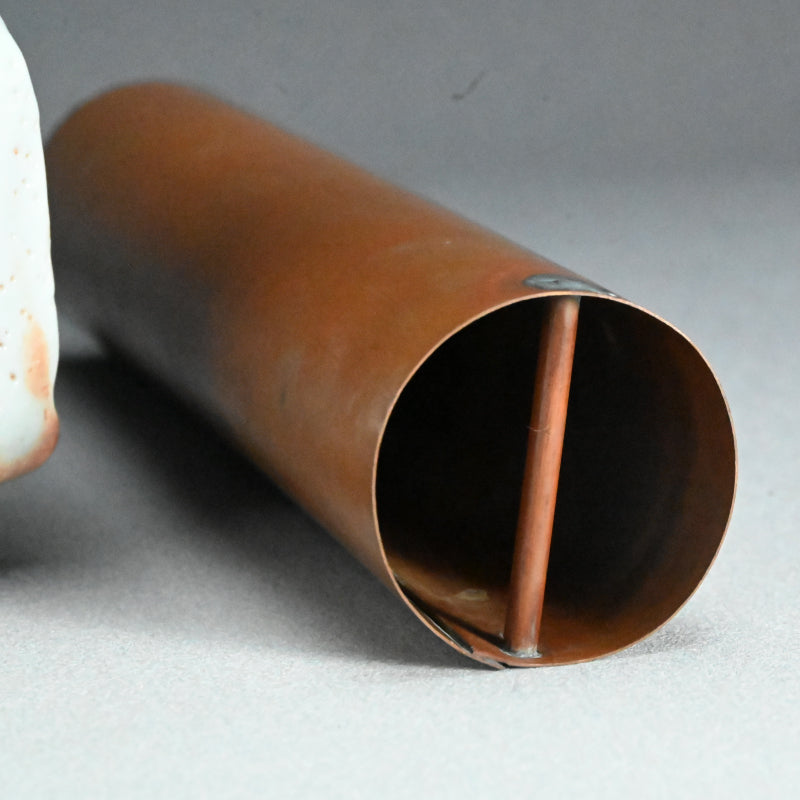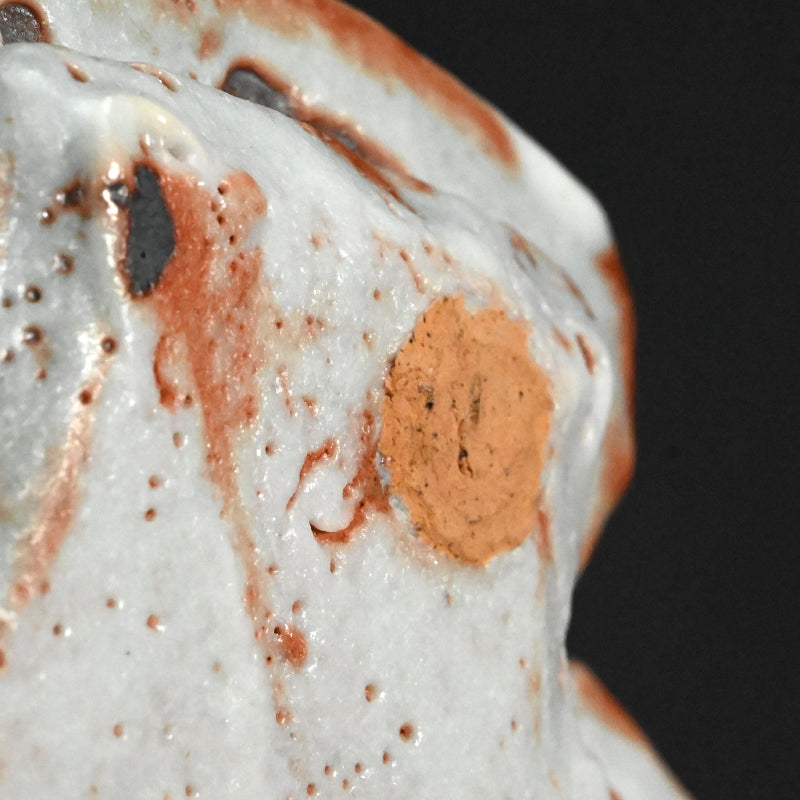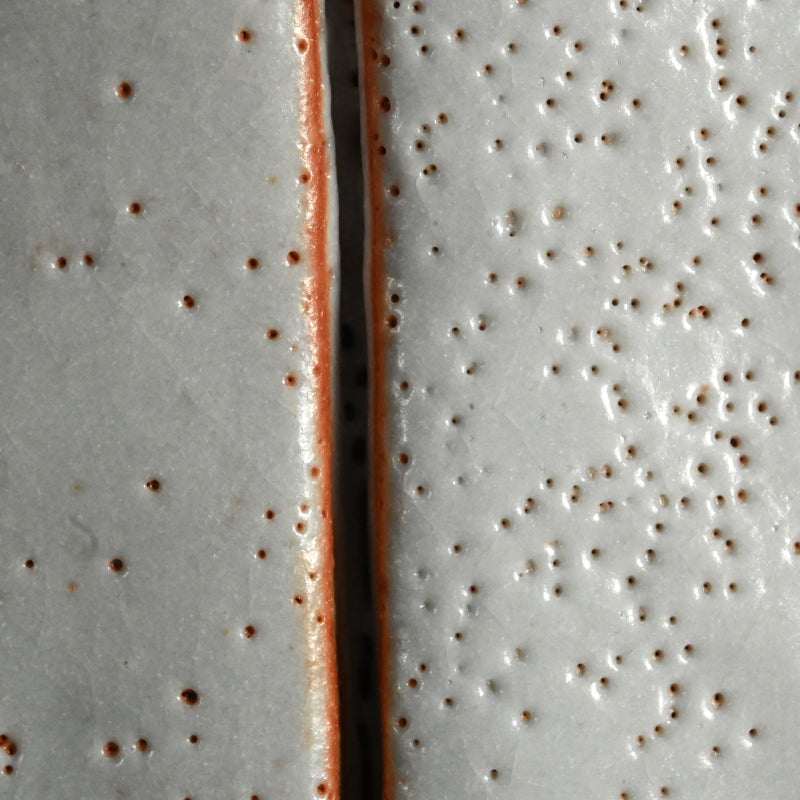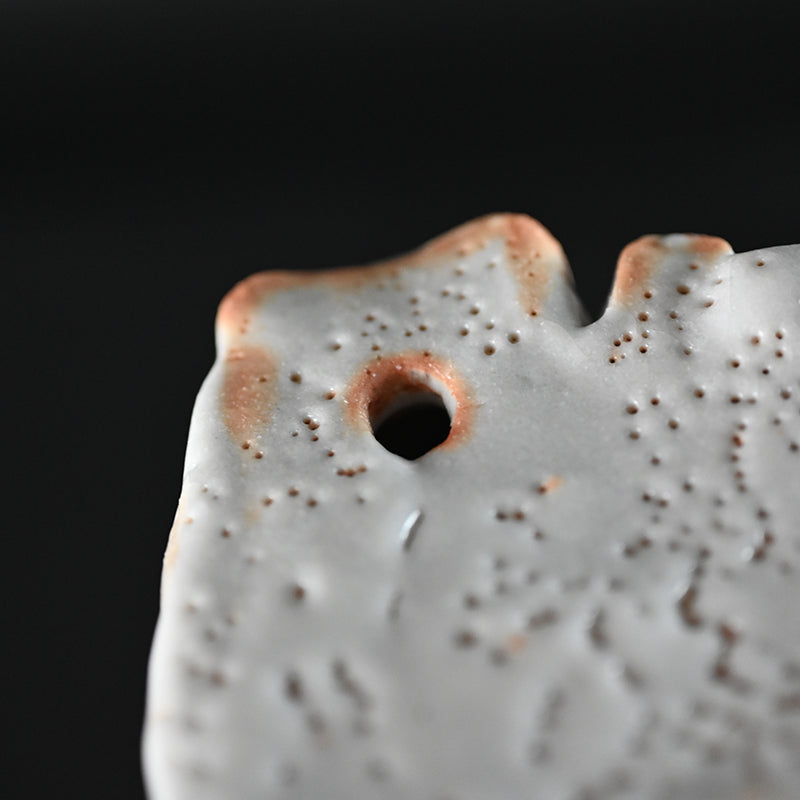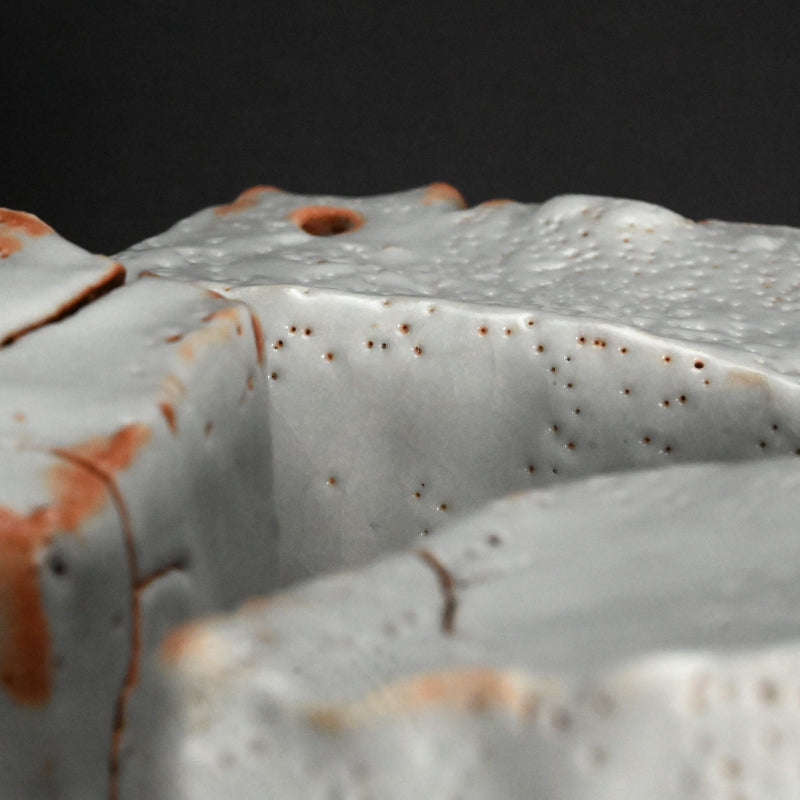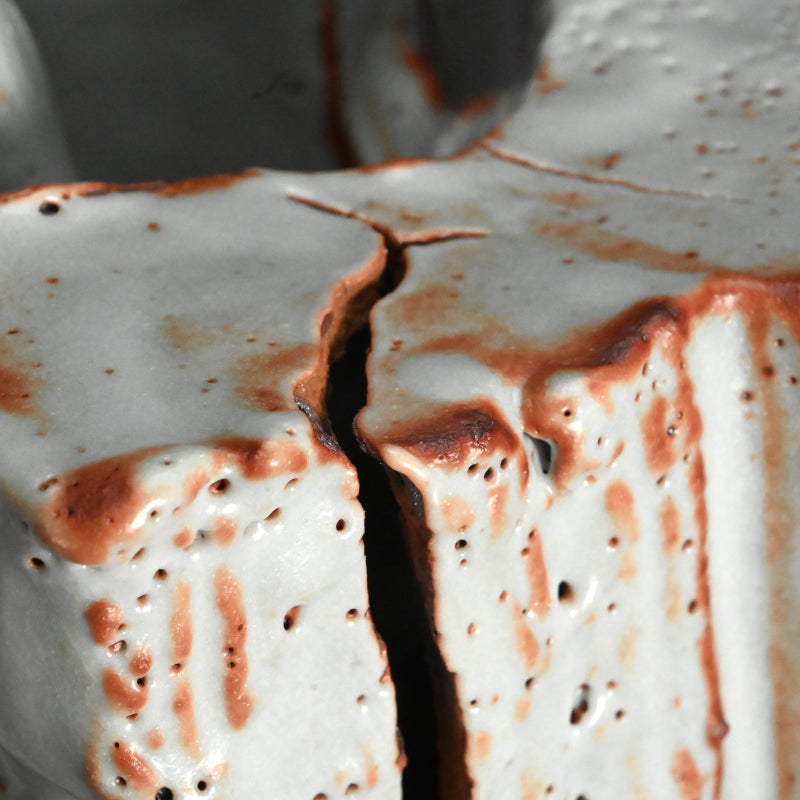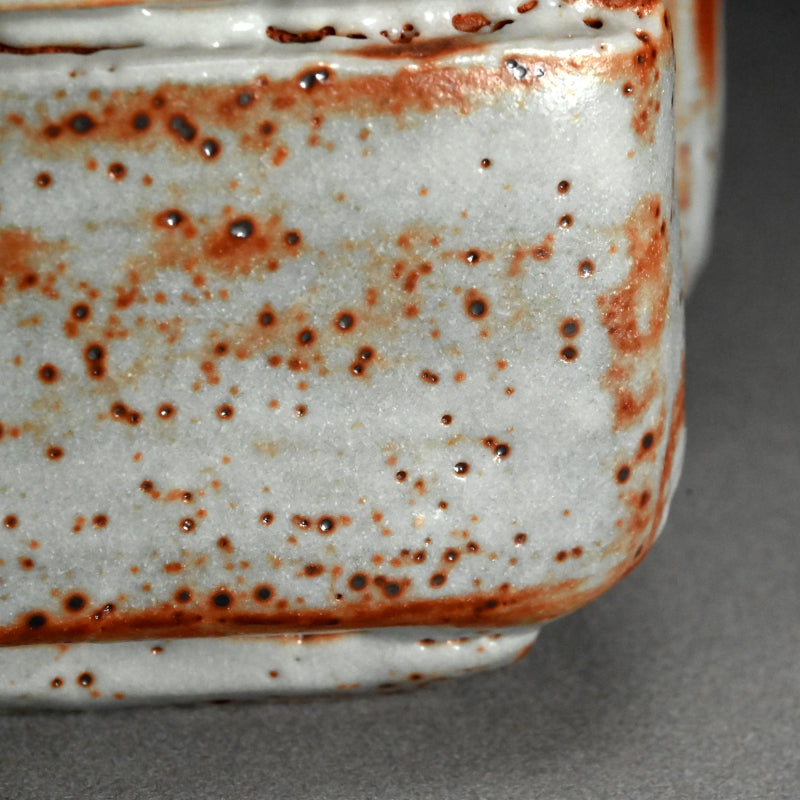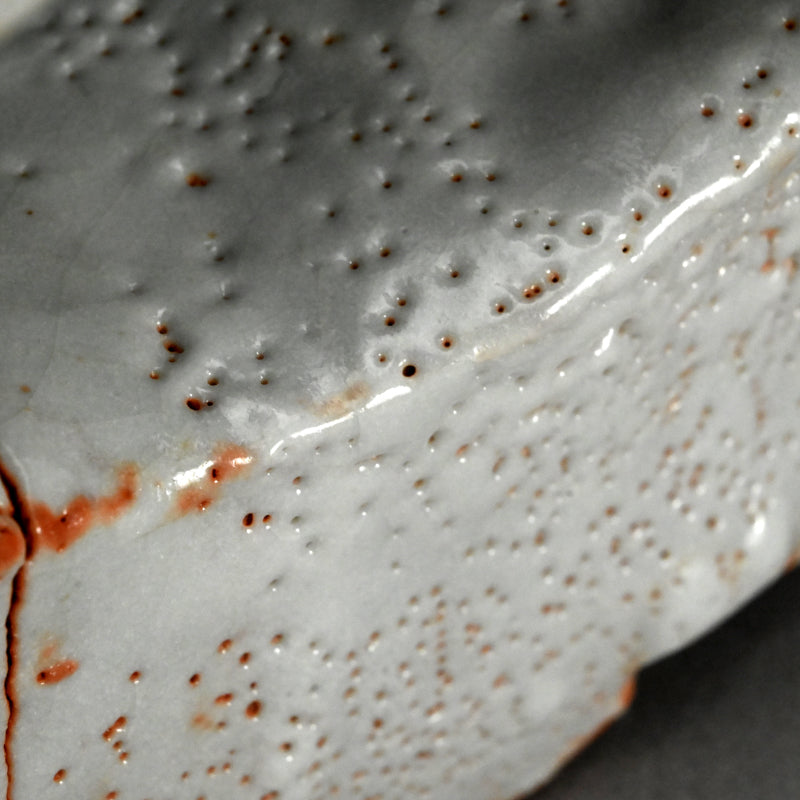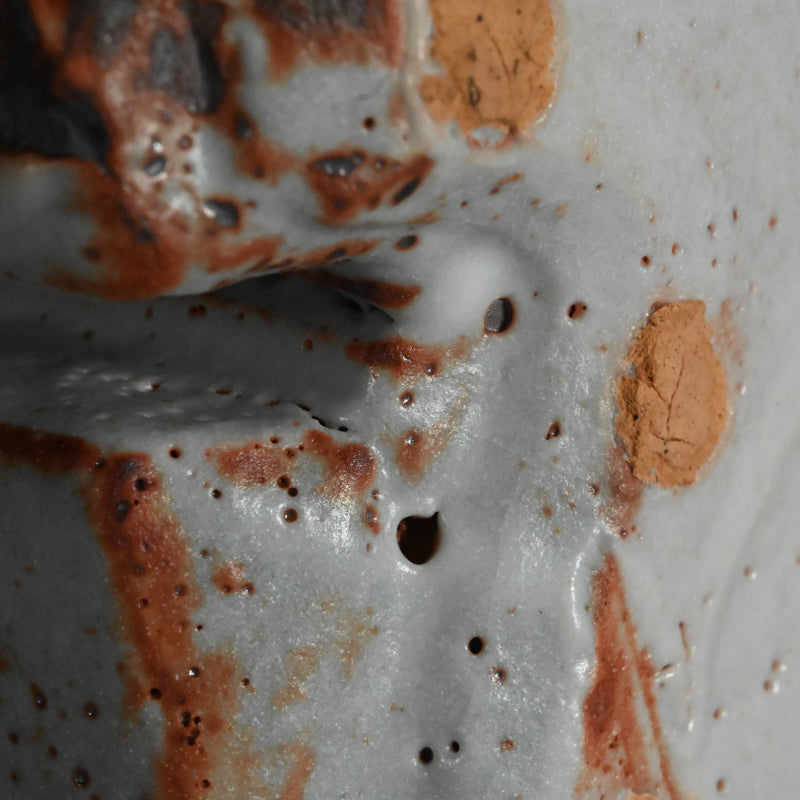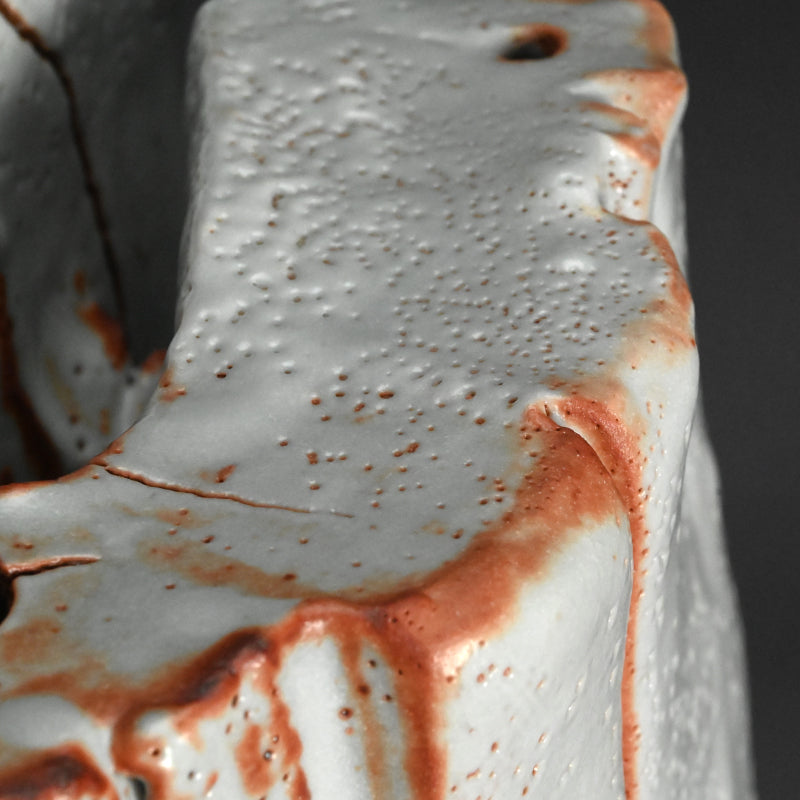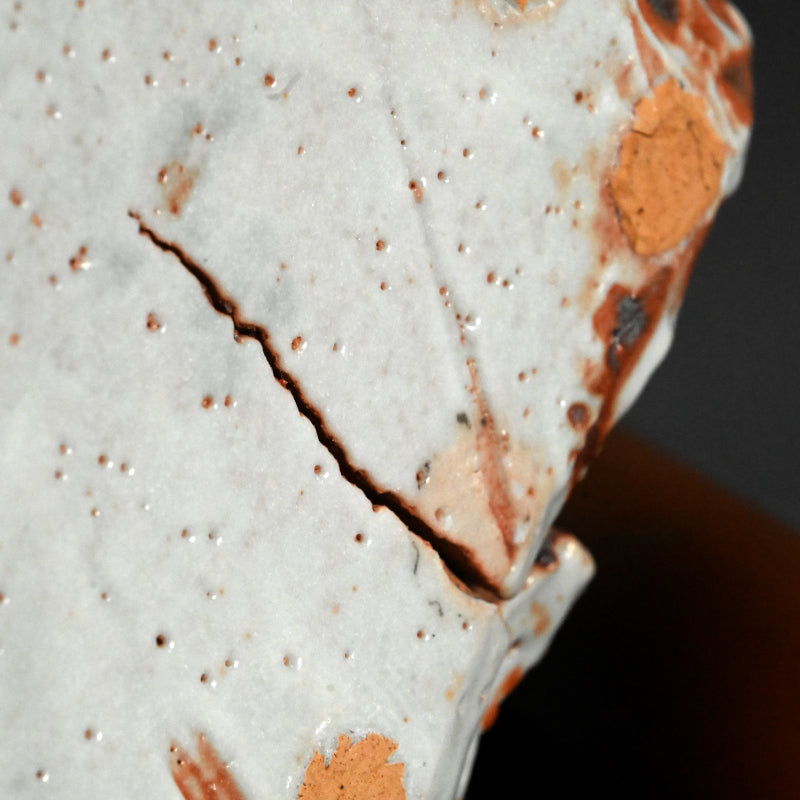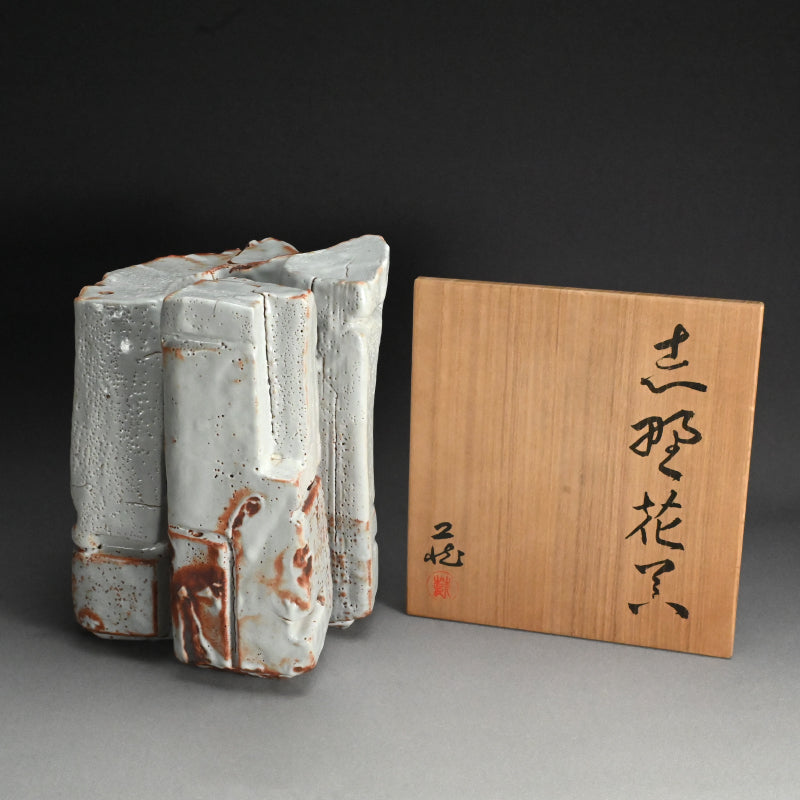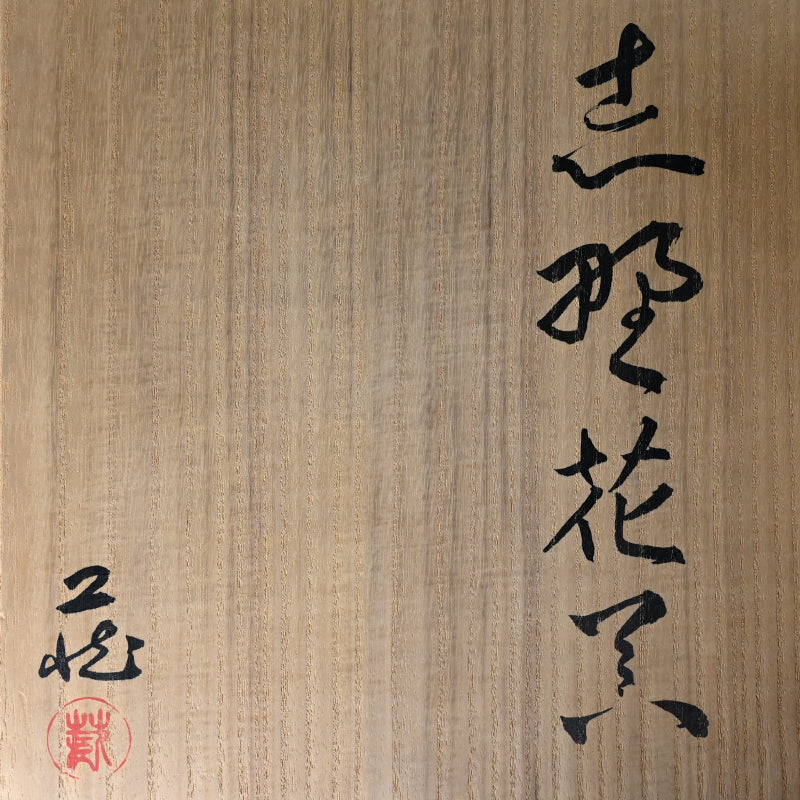Radical Shino Vase ー鈴木 藏 "志野花器"
Radical Shino Vase ー鈴木 藏 "志野花器"
Item Code: MC638
Since this product is an oversized item that requires custom shipping, please send us a message with the delivery address and we will come back to you with a shipping quote.
Contact form
A massive sculptural work by Living National Treasure Suzuki Osamu enclosed in the original signed wooden box titled simply Shino Kaki. However, do not let the simplicity of the title fool you, this piece is truly quite an amazing bit of sculpture. The towering structure is covered in white glaze studded with pinholes and tinged with red. Cracks and fissures erupt with volcanic fury, splitting the surface. A brass insert has been created by the artist to hold water in the center. It is 25 x 26 cm (roughly 10 inches) square, 33 cm (13 inches) tall, and weighs 11.6 kg (25 pounds)! A vase of similar shape bearing the same title is currently on exhibition at the Suzuki Osamu Exhibition at the Mino Ceramics Museum, in Gifu prefecture, and is published in the catalog figure 25 page 52. A copy of the catalog from the exhibition will be included.
Due to size the cost of shipping will be accrued separately.
Suzuki Osamu was born in Gifu prefecture in 1934, and graduated the Tajimi Technical School ceramics division in 1953. (not to be confused with avant garde potter Suzuki Osamu of Kyoto Sodeisha fame) That same year he was awarded at the 6th Dento Kogeiten Traditional Crafts Exhibition. One of the great researchers, he spent many years excavating old kiln sites in an effort to re-invent Shino ware. In 1962 he was exhibited in Prague. And the next year took a prize at the Asahi Ceramic Exhibition. Very much lauded at this time, it culminated in 1969 when he received the JCS Gold award (Japan Ceramic Society), one of the highest honors for a Japanese potter. He would receive the JCS award again in 1982, and by that point be nurturing or inspiring a number of young potters aspiring to the forgotten ways of Shino ware. He was named a Living National Treasure in 1994 for his life-work. Work by him is held in a multitude of public collections throughout the world. For more see “Japanese Studio Crafts, Tradition and the Avant-Garde” (1995) by R. Faulkner.
Share
